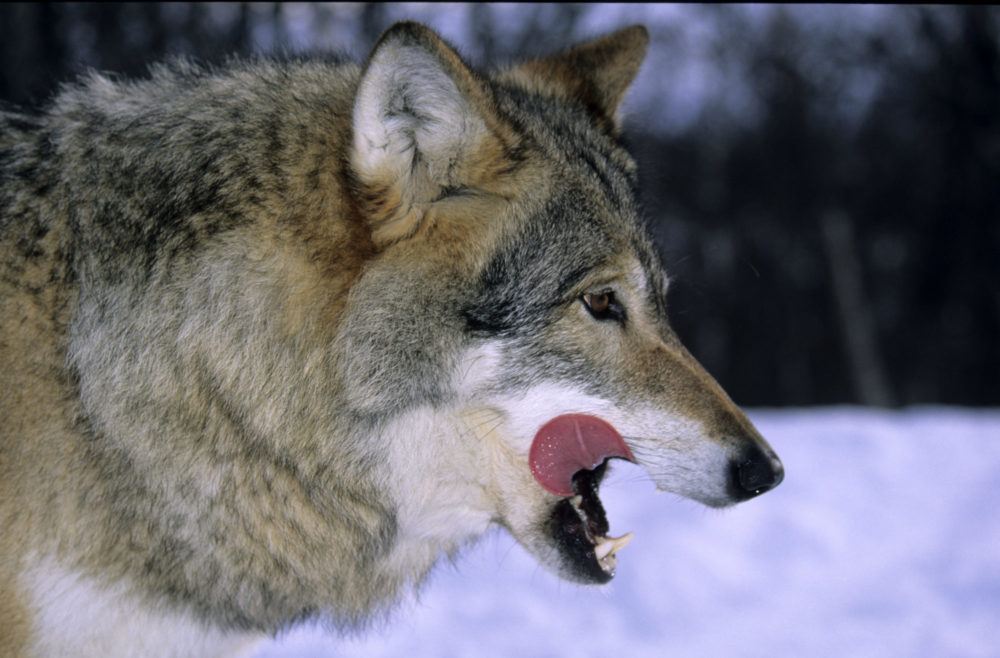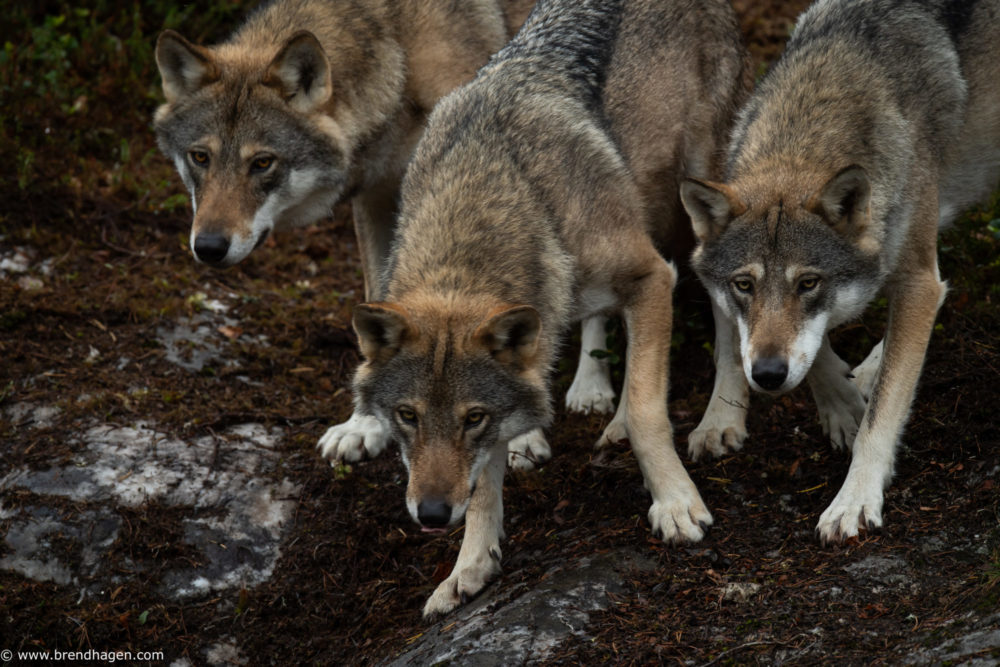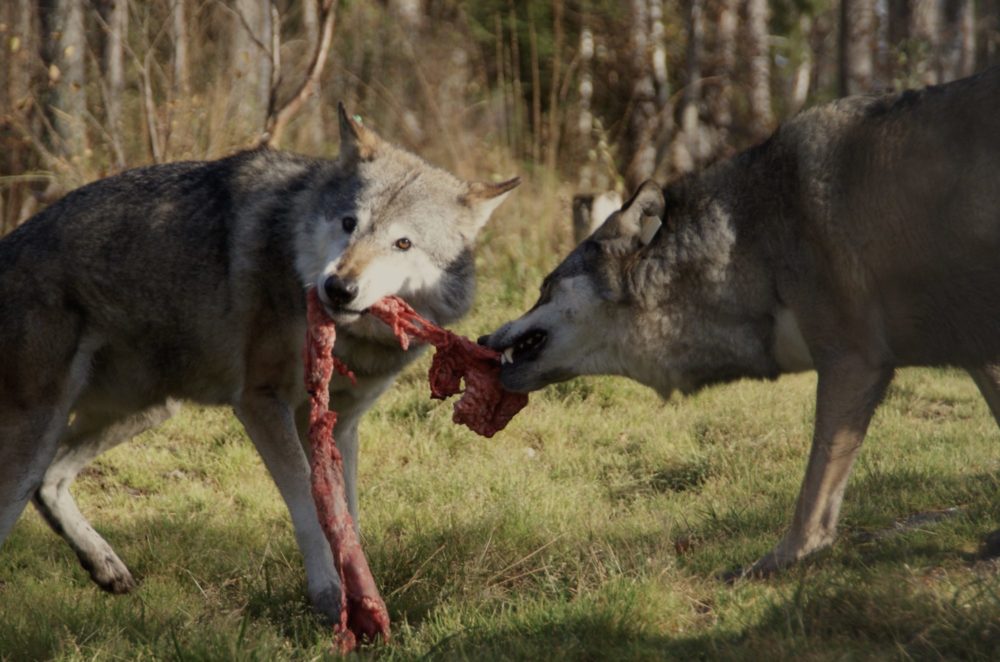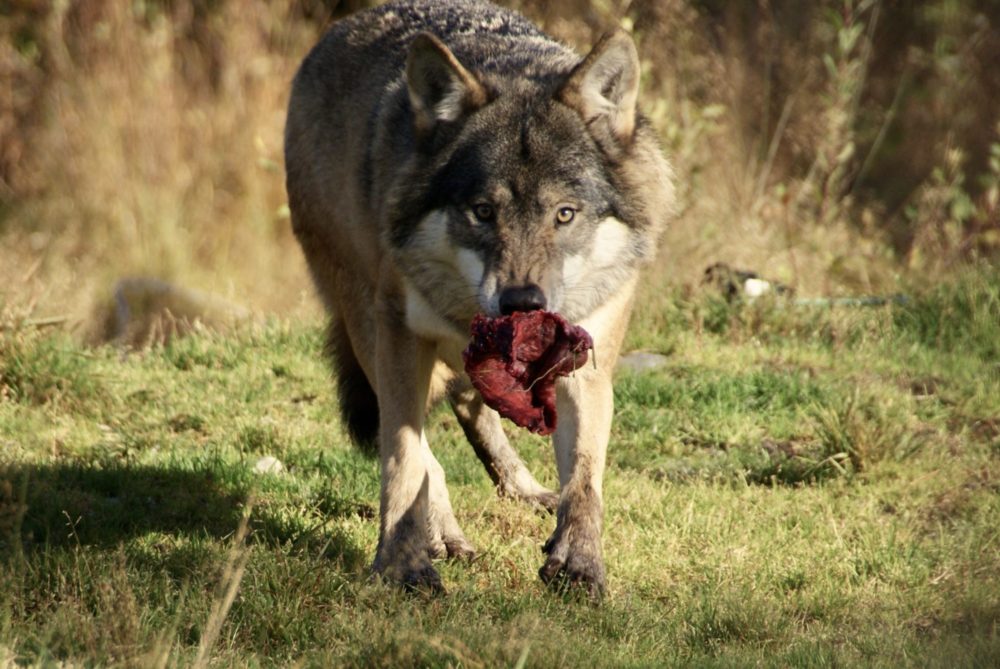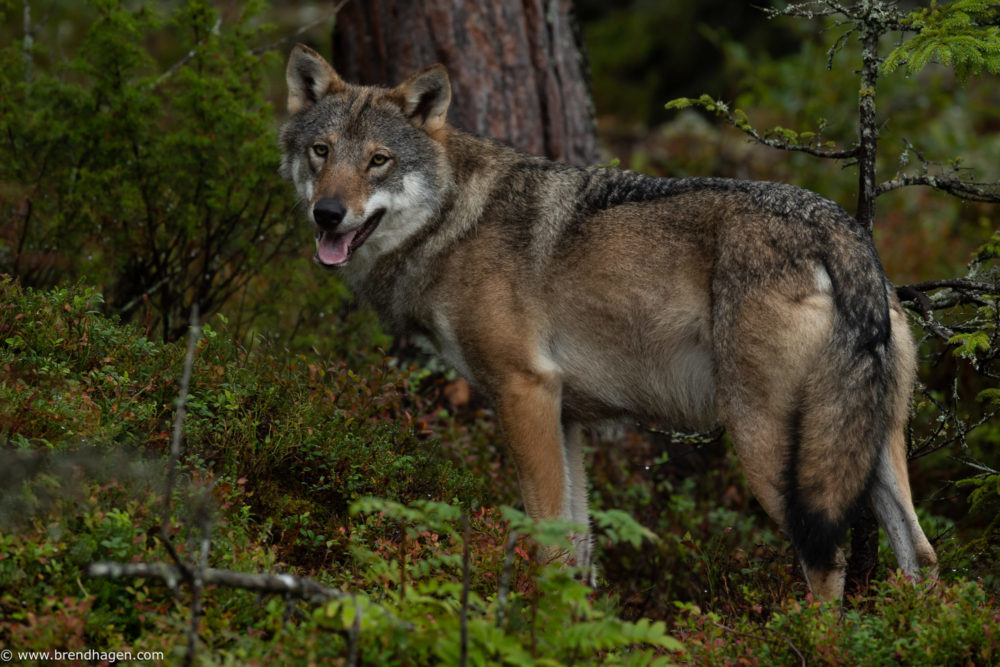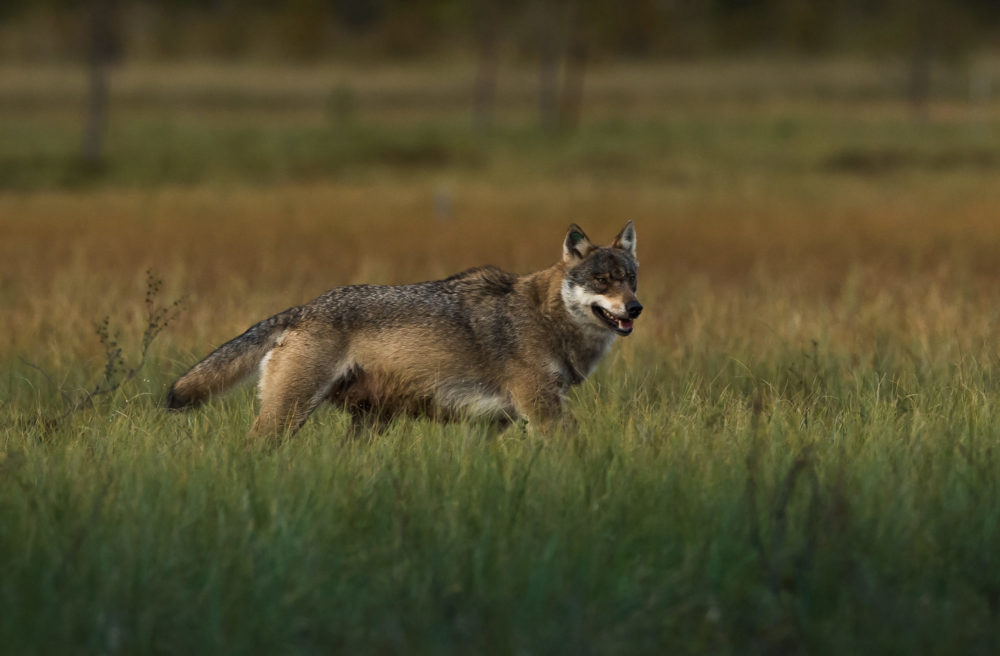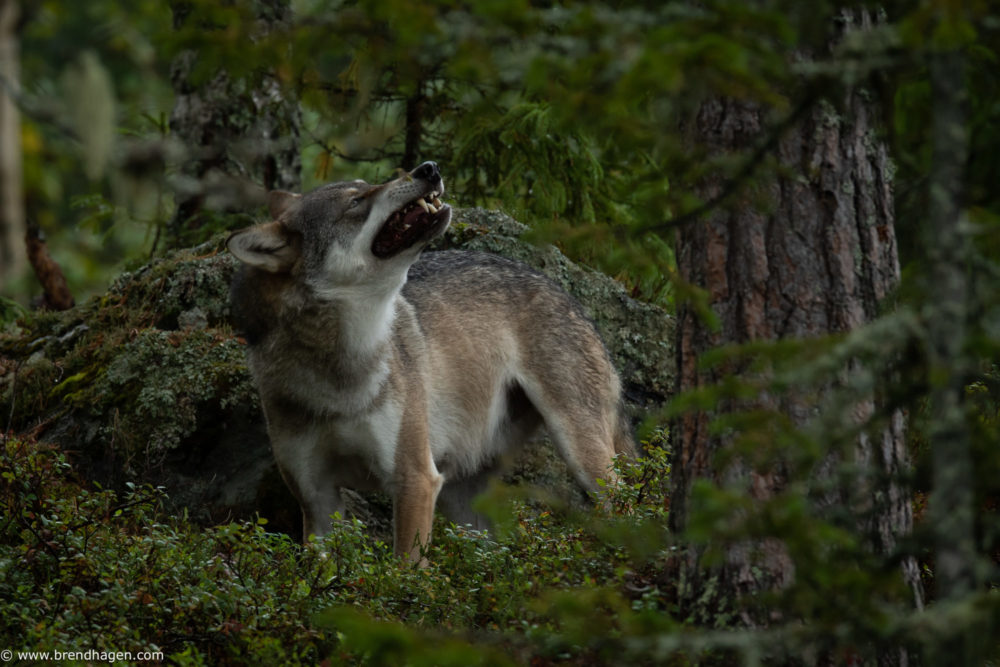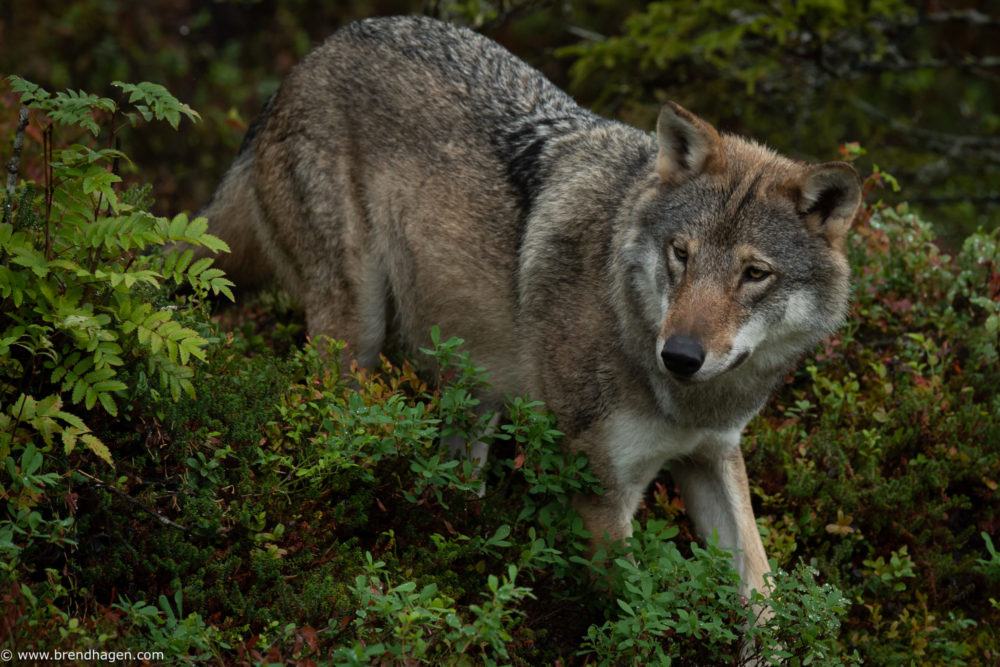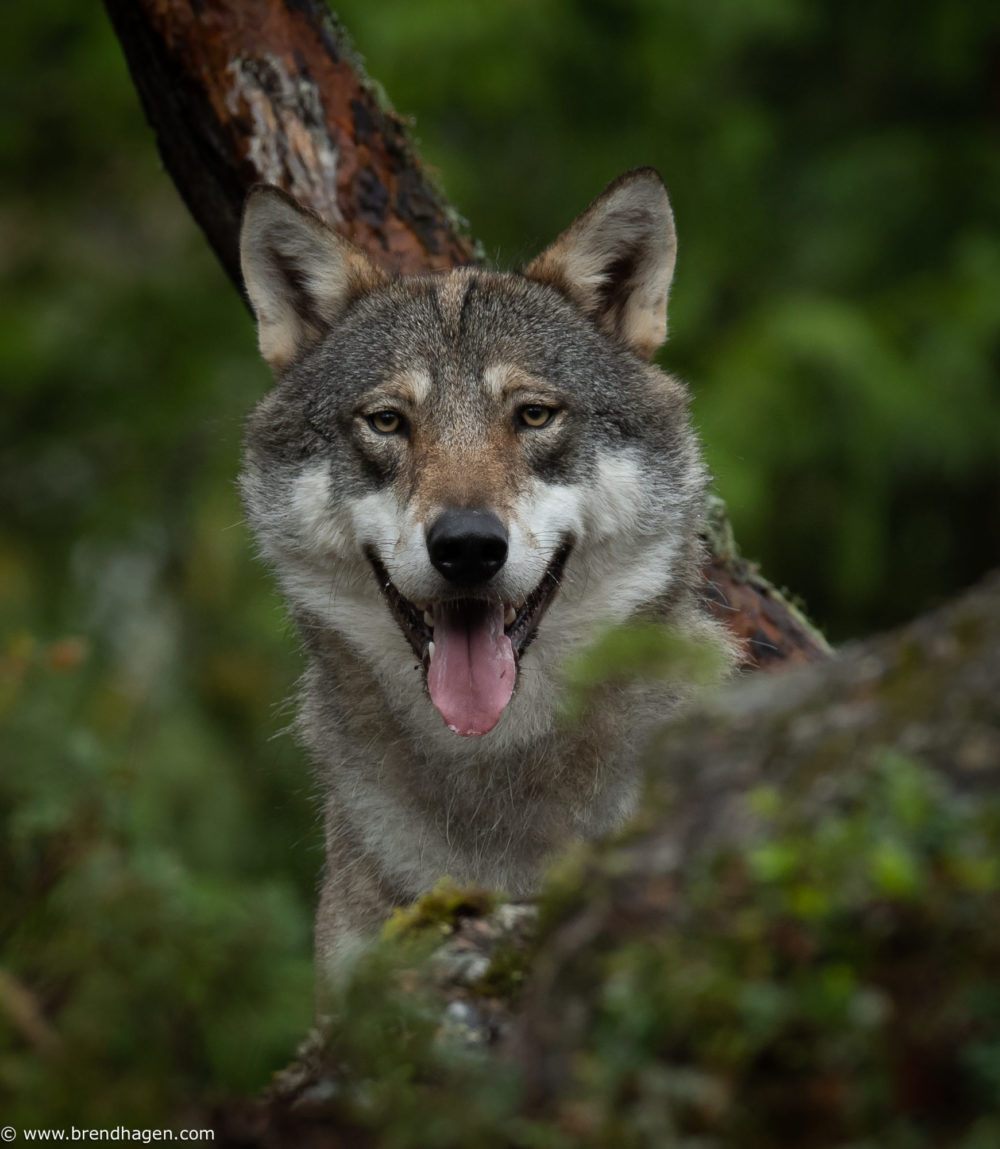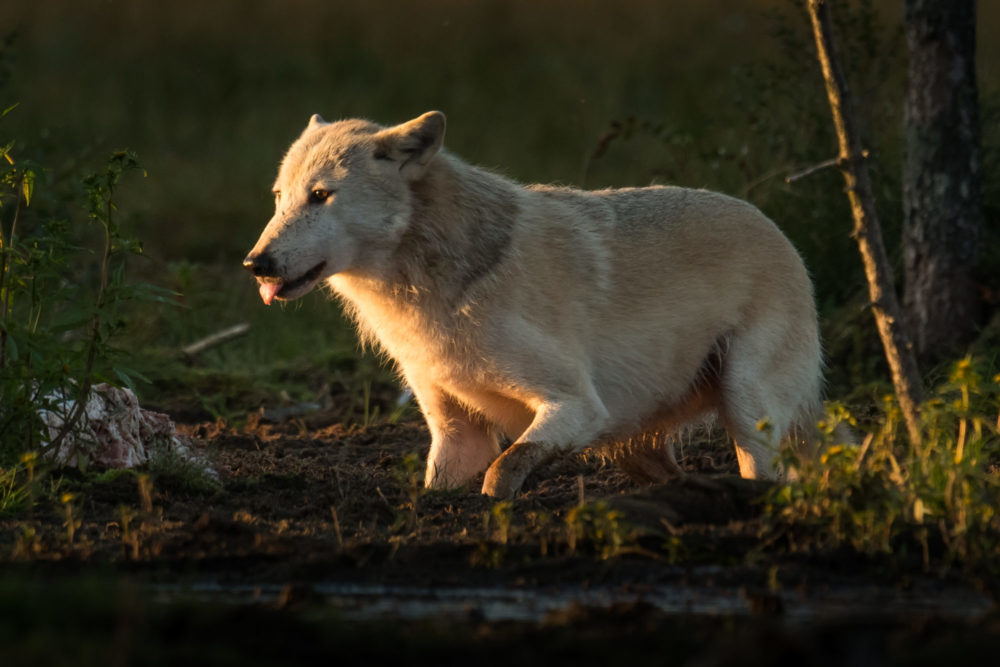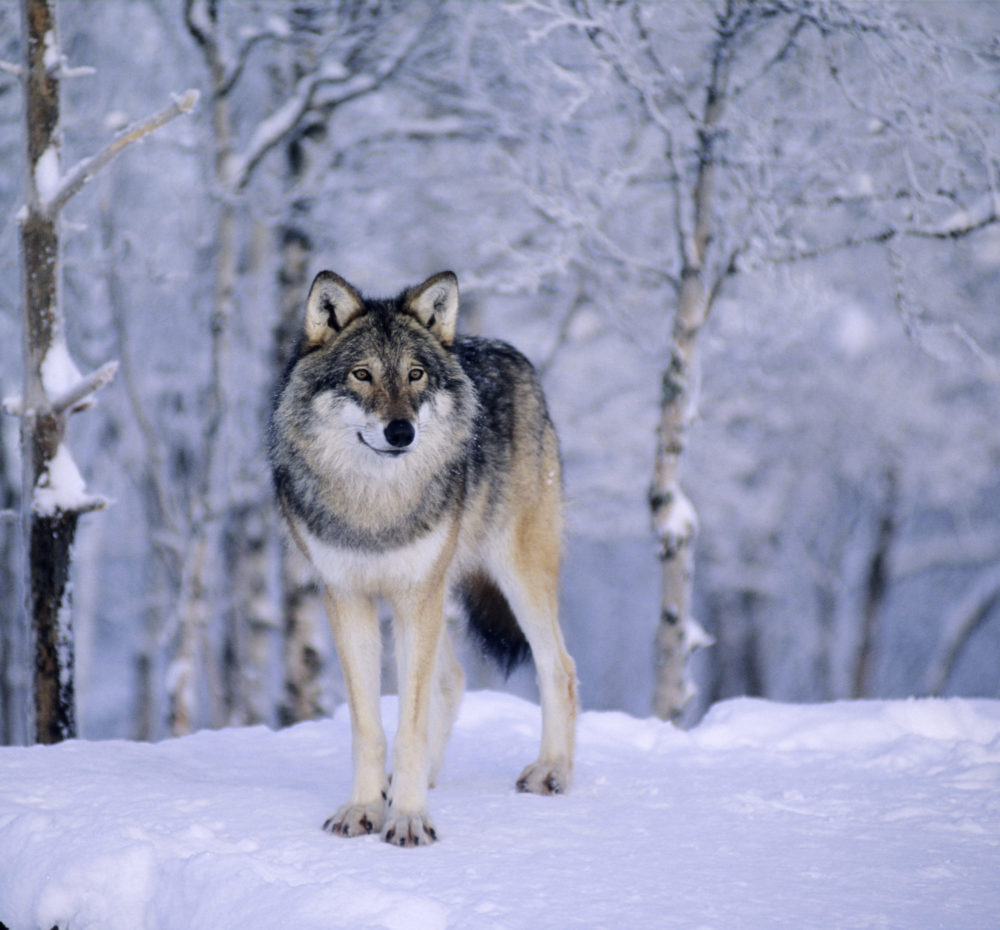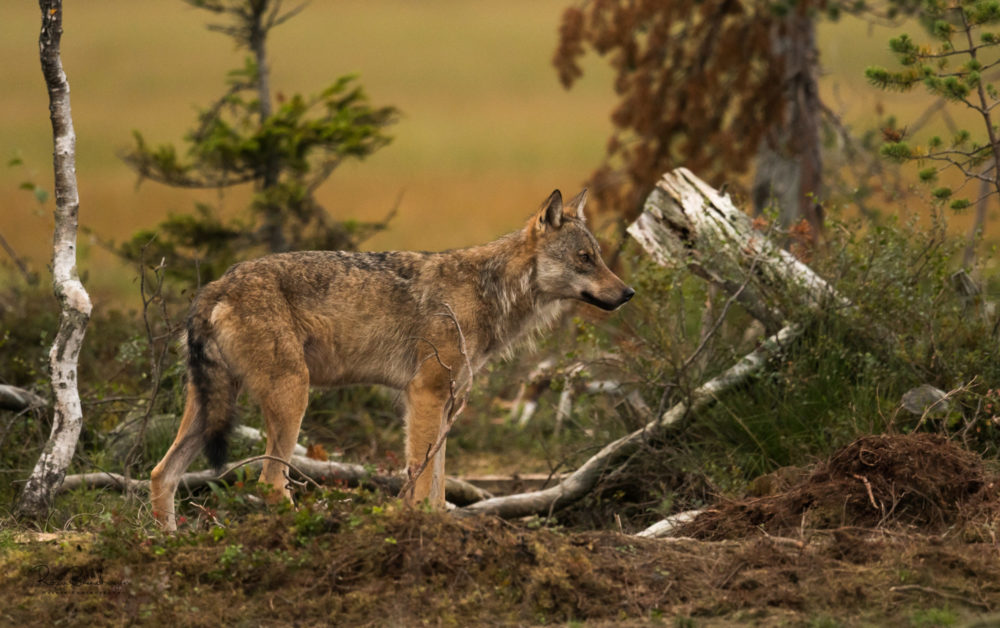About wolves
The wolf is the largest member of the dog family, and the ancestor of our dogs. It is a pack animal and lives together in family groups. There are a great many myths about wolves. On this page, you can find out what is fact and what is fiction!
Wolf facts
Latin: Canis lupus.
Family: Dog family (Canidae)
Length: 100 – 150 cm.
Weight: 20 – 55 kg.
Breeding season: February.
Number of young: 1-8.
Lifespan: Normally 6 – 8 years.
 Wolf tracks
Wolf tracks
Wolf tracks are just like those of a large dog. So it is impossible to tell them apart from a single footprint.
